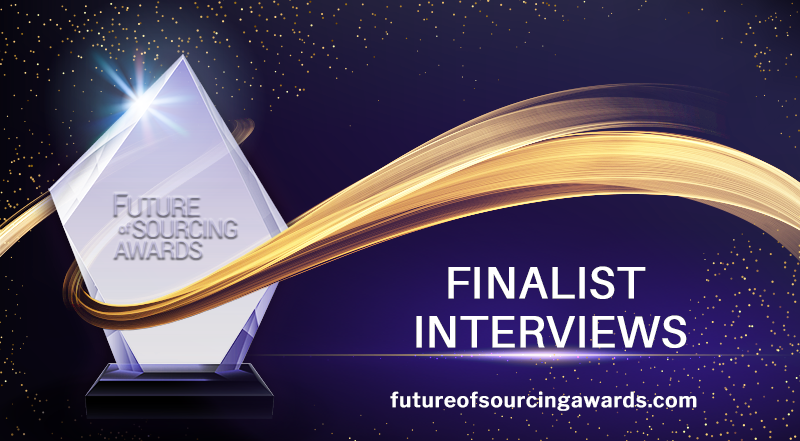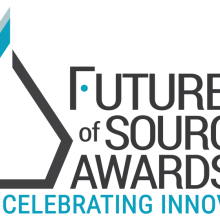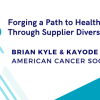1) Can you outline why your team embarked on this project and the problem that needed to be solved?
ATD faced challenges in managing contracts effectively, prior to the implementation of our Contract Lifecycle Management (CLM) tool. The absence of a centralized repository resulted in contracts scattered across disparate storage locations, making it difficult to track, retrieve, and monitor contract obligations. The lack of a streamlined process further exacerbated the issue, leading to delays, inefficiencies, and missed opportunities.
Additionally, we also recognized the pressing need to improve compliance with sourcing policies. With the manual system in place, the ability to enforce and monitor adherence to sourcing policies was limited, resulting in a compliance rate of less than 40%. This posed a considerable risk to ATD's operations, may expose the company to legal and financial liabilities.
2) How were things done originally and what was the inspiration to innovate the process?
Prior to the implementation of a Contract Lifecycle Management (CLM) tool, ATD managed its contracts using a manual and decentralized approach. The original process involved a combination of physical paper documents, email communications, spreadsheets, shared network drives and Sourcing team members physically walking to the signatory’s office to gain contract execution.
The inspiration to innovate the process and implement a CLM tool came from a combination of the challenges posed by manual contract management processes, coupled with the desire for improved efficiency, compliance, and strategic decision-making. Below are our key considerations:
1) Increasing Complexity: As ATD grew and expanded its operations, increasing contract volume and complexity due to differing business needs, managing contracts manually has become increasingly challenging, inefficient, and unsustainable.
2) Risk Mitigation: With ATD’s growth, the team recognized the need to mitigate risk by ensuring better compliance with contractual obligations and regulatory requirements. A centralized CLM system provides the necessary tools to monitor and manage compliance effectively, while enabling better business decision-making and supports negotiating more favorable terms for the organization.
3) Operational Efficiency: Digitizing and automating contract management processes significantly improves operational efficiency by reducing the time and effort spent on manual tasks. The Sourcing & Legal team could focus on more strategic, value-added activities, expand resource capacity, and help train new resources easier.
4) Stakeholder experience: Prior to CLM, the contract drafting, negotiation, and approval processes were slow due to the lack of standardized templates and automated workflows resulting in delays in finalizing agreements which in turn delays value to market for our business and can lead to missed business opportunities. This directly impacts stakeholder experience negatively. Implementing a CLM tool helps streamline the contracting processes, which enhances internal (business partners, approvers, etc.) and external stakeholders (suppliers & partners) by improving cycle time and enhancing process transparency.
3) What KPIs did you use to measure success for this project? (For example: performance, customer satisfaction, revenue, sales or relevant financial gains?)
The implementation of the CLM tool has resulted in significant outcomes, driving process efficiency, customer satisfaction, compliance, and risk management. Examples of achievements we have attained and the KPIs we used to measure:
Customer Satisfaction: The CLM tool has had a direct positive impact on customer satisfaction.
Through faster contract processing, visibility to the status of the contract and improved accuracy, we have enhanced our responsiveness to customer needs. The ability to efficiently manage contracts and provide timely updates has resulted in a 20% increase in customer satisfaction. Customers appreciate the improved speed, transparency, and professionalism exhibited throughout the contracting process.
Cycle Time Tracking and Improvement: With the CLM tool in place, we have gained the ability to track contract cycle times accurately. This capability has enabled us to identify areas for improvement and implement measures to enhance efficiency. By analyzing data and identifying bottlenecks, we have achieved a 10% reduction in cycle time, ensuring faster contract execution and improved time-to- value for our customers.
Compliance and Risk Management: The implementation of the CLM tool has significantly enhanced our compliance and risk management practices. Through standardized approval workflows, and centralized contract repository, we have achieved an impressive compliance rate of 96% in Indirect Sourcing. This high level of compliance ensures adherence to sourcing policies, regulatory requirements, and minimizes potential legal and financial risks.
4) How do you plan to ensure that the new model remains relevant and adapts to the future needs of the market?
Our plan focuses on continuous improvement approach, leveraging user engagement, data driven insights and a commitment to keep abreast with business and industry shifts.
1) User-Centric Approach / Feedback Loops:
Our users' experiences and feedback will be central to driving improvements. By actively engaging with end-users and gathering insights from their interactions with the tool, we can identify pain points & untapped opportunities for enhancement, subsequently making necessary changes to respond to emerging requirements on improvements and evolving business goals.
2) Continuous Training and Support: Regular training sessions will empower users to leverage the CLM tool to its fullest potential. Additionally, a dedicated support system will swiftly address user concerns, facilitating smooth adoption and fostering a culture of ongoing improvement.
3) Benchmarking & Data Analytics: Defining key performance indicators (KPIs) will help us benchmark the tool's success. By setting measurable goals for contract cycle time, compliance rates, and customer experience scores, and utilizing data analytics from the tool, we can track our progress and prioritize areas that require enhancement.
4) Continuous Learning from the Market: Staying attuned to industry trends and emerging technologies will be an ongoing effort. Attending conferences, engaging with industry thought leaders, and conducting regular market research will help us anticipate market shifts and adapt the process and tool accordingly.
5) What advice do you have for those who may want to implement this innovative approach in their own organizations?
Implementing a Contract Lifecycle Management (CLM) system is an organizational transformation endeavor that requires careful planning, collaboration with key stakeholders, executive sponsorship, and a commitment to continuous improvement. By understanding your organization's unique needs, selecting the right solution, and fostering a culture of adaptation, you can position your organization for success. Based on our experience, we submit below some points to consider:
1) Understand Your Current Processes: Before diving into the implementation, thoroughly understand your existing contract management processes. Identify pain points, inefficiencies, and areas that require improvement. Our process was disparate. Our deliberate effort to document the current state, served as a baseline to define our objectives and evaluate impact of the CLM system.
2) Engage Key Stakeholders & Executive Support: Engage all relevant departments and stakeholders early in the process. Sourcing, Legal, Finance, IT teams, and Top Leadership should provide input to ensure that the CLM system caters to the diverse needs of the organization. Identifying an Executive Sponsor to champion change management is also crucial. Having executive support not only ensures organizational support and appropriate resource allocation but also underscores the importance of the CLM initiative to ensure adoption.
3) Plan for Change Management: Introducing a new system often requires changes in workflows and mindsets. Develop a robust change management plan that includes training, communication strategies, and ongoing support to facilitate a smooth transition. We identified Change Champions for each of the business functions to support grassroots user communication and adoption. In addition, invest in comprehensive training for catering to each user group (Sourcing Team, Business Partner, Legal, Approvers, etc.). Users should feel confident navigating the CLM system and understand its features, ensuring optimal utilization.
4) Data Migration and Cleanup: Migrating existing contract data can be complex. Prior to implementation, ensure your data is clean, accurate, and well-structured. This will save you from issues during migration and help you start with a clean slate.
5) Customize with Caution: While customization can cater to specific needs, be cautious not to overcomplicate the system. Strike a balance between custom features and maintaining a user-friendly interface.
6) Compliance and Security: Contracts often contain sensitive data, and data security should be a top priority. Ensure that the CLM system adheres to your organization and industry regulations & security standards.
7) Monitor and Iterate: Rigorous testing is crucial before rolling out the CLM system. Conduct pilot tests with real-world scenarios to identify any glitches, usability issues, or gaps that need addressing. After implementation, continuously monitor system usage, gather feedback, and track key performance metrics. Use this data to make iterative improvements that align with evolving business needs. Be prepared for the unexpected. Markets change, and your organization's needs might evolve. Keep the CLM system flexible and adaptable to accommodate future changes.
8) Celebrate Wins: Recognize and celebrate achievements along the implementation journey. This boosts morale, supports adoption, and reinforces the positive impact of the updated process and CLM tool.
6) What factors do you think are the most important to consider when innovating in this category?
Innovation in the CLM category should be driven by a deep understanding of organizational needs, an unwavering commitment to enhancing user experience, and a proactive exploration of emerging technologies. By carefully considering these factors, organizations can chart a course toward cutting-edge contract management practices that drive adoption, efficiency, compliance, and business growth. Some thoughts I’d consider when pursuing innovation in CLM:
User-Centric Design: Innovation should focus on improving the user experience for all stakeholders involved in the contract lifecycle. Prioritize a user-centric design that simplifies complex processes, reduces friction, and enhances overall usability, ultimately driving higher adoption rates.
Automation & AI: I believe automation is a key driver of efficiency. Innovate by incorporating workflow automation features that reduce manual intervention, minimize errors, accelerate approval processes, as this will ensure contract timelines are met consistently. In addition, innovation via the application of artificial intelligence (AI) in contract management can revolutionize the way contracts are analyzed and understood. By integrating AI-driven contract intelligence to extract important clauses, analyze risks, and identify opportunities for optimization, sourcing and legal teams can increase efficiency and manage risks effectively for their business.









